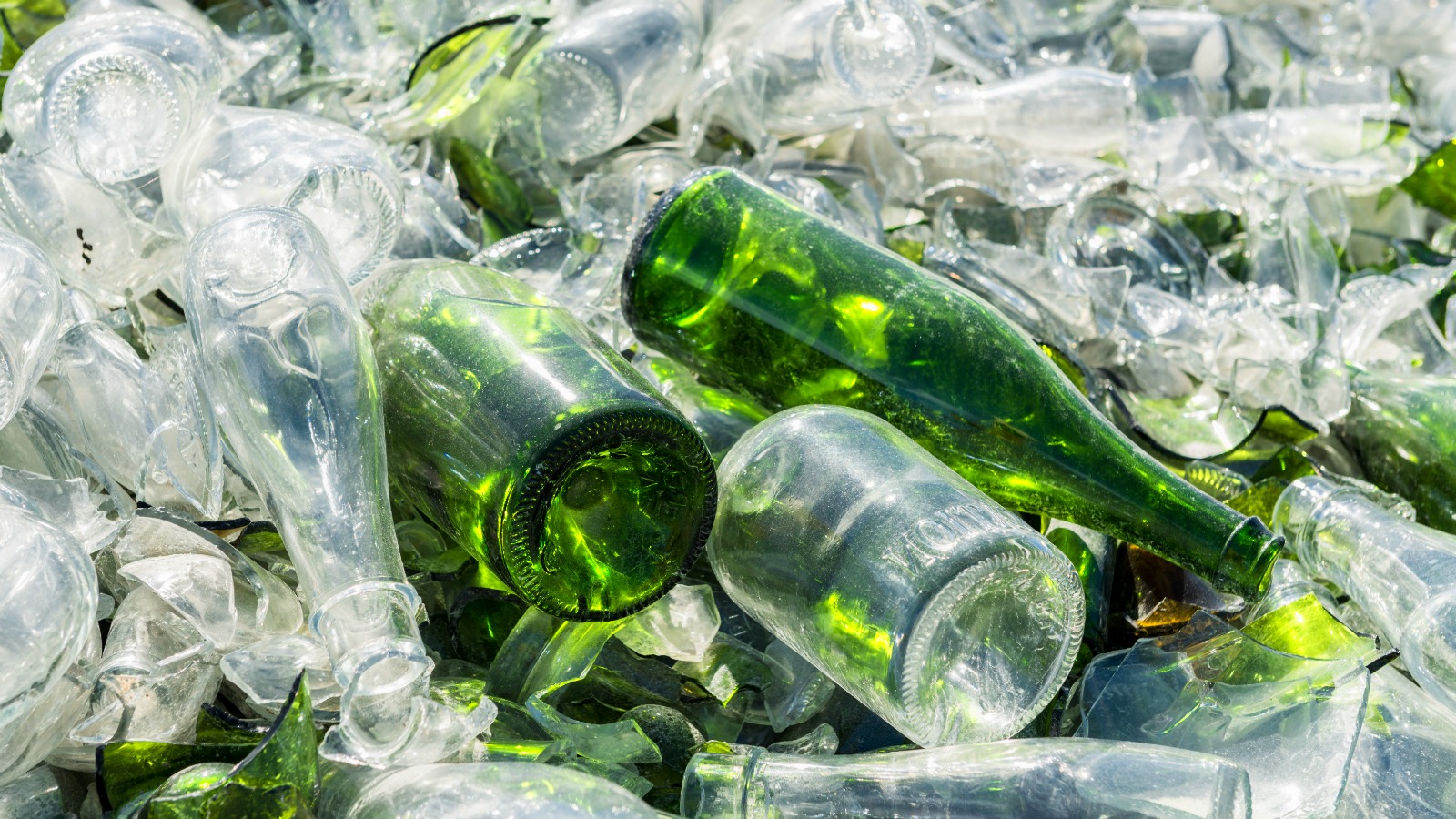Q. Dear Umbra,
Here in my environmentally proud city, a local newspaper recently asserted that much of the glass our municipal curbside recycling program collects actually ends up landfilled. The supposed reasons: low demand for recycled glass and high transport costs due to its weight. Say it isn’t so! Is this just an isolated dent in my town’s green image, or a national trend among glass-phobic recyclers? Must I switch from my favorite bottled microbrew to a (possibly BPA-lined) aluminum can?
JT
Bellingham, Wa.
A. Dearest JT,
Even the greenest among us have their dirty little secrets. I know otherwise eco-minded people who sheepishly refuse to compost their coffee grounds or park their gas-pig trucks a block from work so no one will see – so I get how a proudly green burg run by otherwise eco-minded people could be quietly tossing its “recyclable” glass. If a town is suffering glass woes, though, I highly doubt anything shady is afoot. Instead, cold, hard economics are to blame.
At first glance, the reasons for recycling glass seem clear as, well, glass: The clear stuff can be recycled ad infinitum without losing any quality (unlike paper), recycling saves energy and water compared to making virgin glass, and, of course, without it, our landfills would be swallowing a whole lotta bottles of everyone’s favorite microbrew. But in order to reap those benefits, we first need to get the old glass to recyclers in a useable state, and in an affordable way – and there’s the rub, as they say.
Let me pause for a moment to reassure you that your hometown is indeed recycling most of its glass into new bottles, according to the managers down at Bellingham’s recycling company. Still, many other towns across the country are struggling with this very problem. Here’s why.
Many of the difficulties begin with the popular (among citizens, anyway) single-stream recycling system. When you’re chucking all recyclables, from paper to plastic to glass, together in one bin, the glass tends to break and get all mixed into everything else along the way. Broken bits of glass not only contaminate the other recyclables, but it’s also very difficult and costly to sort them back into a reusable state – and that goes double for loads that are further compromised by food scraps and unrecyclable items like bottle caps or plastic bags (which is why it’s so important to give everything a rinse before tossing it).
Some materials recovery facilities (MRFs) have expensive equipment that can wade through the mess and pull out the glass, but some don’t. Normally, recycling plants pay a MRF for the sorted materials they’ll use to resurrect our castaways into new products. But if the MRF can’t supply a pure enough glass supply, it might end up paying the recycler to take the mixed-up glass bits off their hands. Not exactly good for the bottom line, is it, JT?
Even if the glass makes it through the sorting process in sparkling condition – maybe it came from a glass-only drop-off center or a pre-sorting system like the one Bellingham has – it still might not achieve the recycling nirvana of being made into brand-new bottles and jars. If there’s no glass recycler nearby, the community has to ship the glass elsewhere, which, as you note, can get pretty darn pricey given glass’s weight. These two strikes can mean recycling glass at all becomes too expensive to even attempt: Towns all over the country have recently scrapped their glass curbside programs, including Baton Rouge; Harrisburg, Pennsylvania; and Charleston, West Virginia.
Others are simply funneling their glass to the landfill. But if it makes you feel better, JT, it’s not quite as bad as it sounds: The crushed glass often ends up building roads or lining the trash pits at the landfill, so it’s still serving a purpose (just not an infinitely reusable one).
Overall, only 24 percent of glass ends up recycled in the 40 states that don’t have bottle deposit systems (it’s a sunnier 63 percent in the 10 states that do). But I do have good news: There are ways our recycling systems can improve that track record. Investing in new optical scanning equipment that can more effectively sort different types of glass down at the MRF is one. Another step is starting up more glass-only collection programs, like this one in Colorado. And switching over to a source-separated system, where you and I keep the glass from mingling with the paper before it hits the MRF (whether that’s in our curbside bins or through drop-off recycling centers) would also reduce glass contamination. But we should be careful with that last one, as it would also likely reduce overall recycling rates due to the PIA factor. Dual-stream systems, in which glass and other containers are separated from paper, could be a nice compromise.
Finally, to your real question: Must we all give up our local microbrews? Of course not: Buy yourself a reusable growler and get thee to the brewery for a bulk purchase. And if you must sip from the bottle from time to time, we can be more confident it will end up recycled if we use a drop-off center and not a single-stream bin. Bike there for triple green points – you’ll save emissions and burn enough calories to make up for your sudsy indulgences. Cheers!
Fragiley,
Umbra
Correction: The original version of this column incorrectly implied that Bellingham does not recycle most of its glass. Umbra/Grist regrets the error.




